On average, 77% of an app’s daily active users (DAUs) stop using it within the first three days of installation (Source). By 30 days, this figure jumps to 90%, and within 90 days, it exceeds 95%.
In other words, most apps lose almost their entire user base within a few months. This explains why, out of over 1.5 million apps on the Google Play Store, only a few thousand attract repeat visits over a long period.
Launching a mobile app is exciting, but success doesn’t come from downloads alone. If users leave after their first experience, your app isn’t optimized.
This guide explains how to optimize mobile apps to improve their visibility, performance, and user experience. It is intended for managers of mobile app teams.
To begin, let’s understand what mobile app optimization is.

What is mobile app optimization?
Mobile app optimization refers to improving various aspects of a mobile app to meet certain business goals, such as acquisition, activation, revenue, retention, or referrals.
It includes optimizing app store rankings (ASO), technical performance, UX, features, and security features to remove friction in user journeys and help users achieve what they set out to do when they install the app.
Effective mobile app optimization ensures that your app:
- Gets discovered easily
- Once installed, it loads quickly
- Works smoothly across devices
- Keeps users over time
- Achieves high rankings in app stores
Let’s understand why mobile app optimization is important in detail.
Why is mobile app optimization important?
1. User experience (UX)
People expect apps to be fast, responsive, and easy to use. If your app is slow, buggy, or confusing, users will quickly get frustrated and uninstall it. A well-optimized app UX leads to happy users, better reviews, and increased user retention.
2. Increased visibility and downloads
App stores like Google Play and Apple’s App Store use algorithms to rank apps in search results. Optimized apps that perform well have good user ratings, and relevant keywords rank higher, leading to increased visibility and more downloads.
3. Higher conversion rates
Optimized apps lead to better conversion rates, whether your app is an e-commerce platform, a game, or a service provider. Smooth performance, clear navigation, and an engaging interface encourage mobile users to complete desired actions like making a purchase, finishing a level, or booking an appointment.
4. Reduced uninstallation rates
People uninstall apps for various reasons, but poor performance is major. Optimizing your app reduces the likelihood of users abandoning it due to frustration or inconvenience.
5. Brand reputation
Your app reflects your brand. A well-optimized app enhances your brand image, builds user trust, and contributes to a positive overall impression.
6. Staying competitive
The app market is incredibly competitive. To succeed, your app needs to stand out. Optimization ensures your app performs at its best, offering a superior user experience that can give you an edge.
In short, mobile app optimization is the most crucial activity you can do to attract users, keep them engaged, and achieve your business goals.
Key areas of mobile app optimization strategy
1. App Store Optimization (ASO)
App store optimization focuses on enhancing your app store listing to make it easier to find and understand in app stores. Here are the four key pillars of a strong app store optimization strategy.
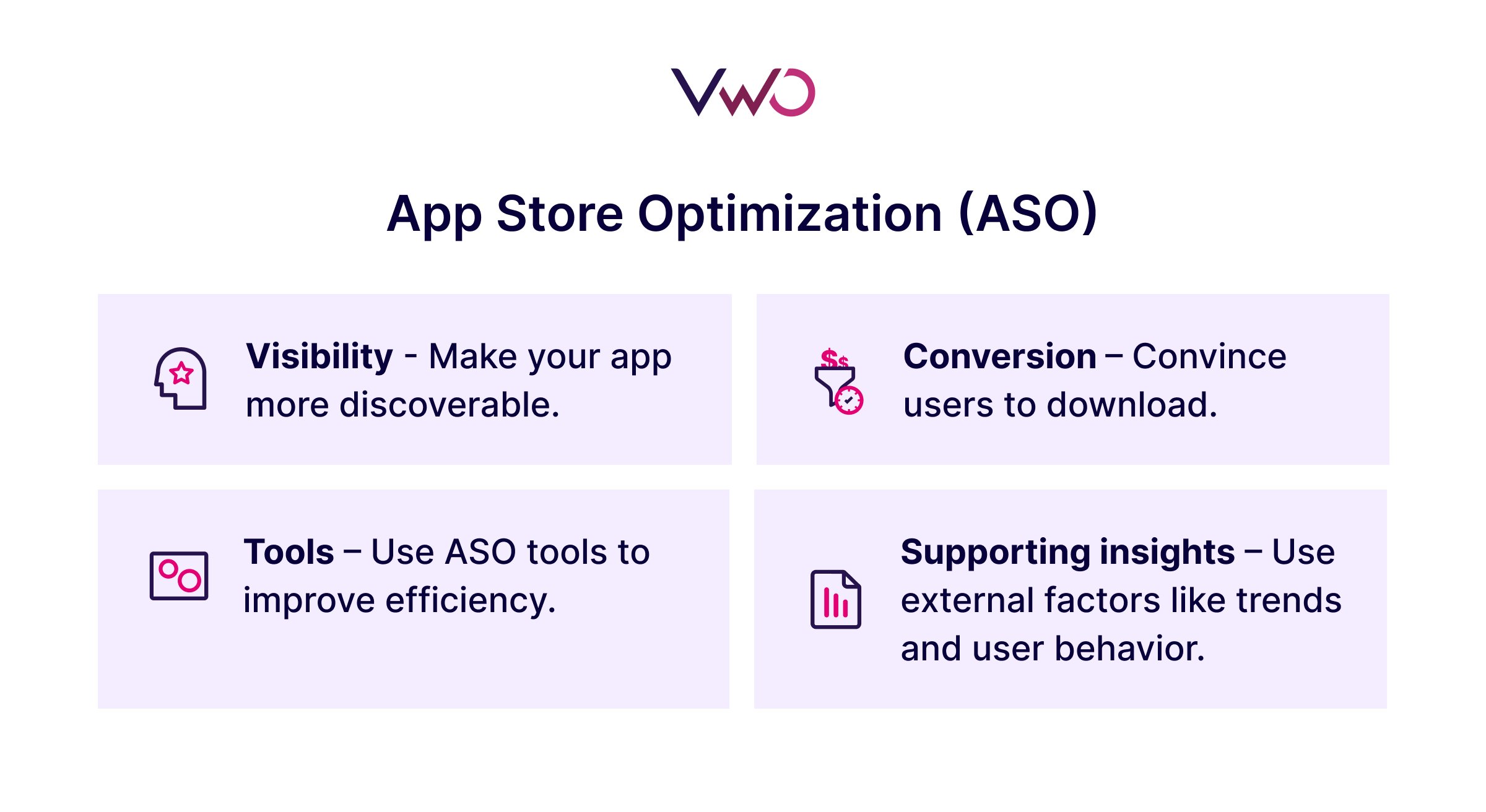
- Visibility – Make your app more discoverable.
- Conversion – Convince users to boost app downloads.
- Tools – Use ASO tools to improve efficiency.
- Supporting insights – Use external factors like trends and user behavior.
2. Increase visibility with keyword optimization
- Research keywords: Use tools like App Store autofill, competitor analysis, and user reviews.
- Prioritize keywords: Focus on terms with high search volume and low competition.
- Add keywords to metadata: Ensure the app title and app description have keywords that users often search.
- Measure performance: Regularly analyze your app’s ranking and adjust keywords accordingly.
3. Improve conversion rates
- Optimize store visuals: Create compelling app icons, screenshots, and videos.
- Conduct A/B testing: Test different assets and descriptions to see what performs best.
- Localize content: Translate and adapt your store page to different markets.
- Leverage app reviews and app ratings: Encourage users to leave positive reviews and reply to feedback
4. Use promotional tools
- Feature your app: Pitch your app to Apple and Google for a chance to be featured.
- Run burst campaigns: A short-term, high-impact marketing strategy to drive many app installs within a short time frame (typically a few days). This spike in downloads improves your app’s ranking in the app store charts, boosting its organic visibility.
ASO is a continuous process. Keep testing, learning, and optimizing your app store strategy.
Performance optimization for mobile apps
Mobile app performance is a key factor in user retention. Slow load times, high CPU usage, and frequent crashes drive users away.
1. Crash-proof your app
As per Embrace’s mobile performance report, nothing frustrates users like app crashes, and 60% of them will uninstall the app within just a few crashes.
A single crash can reduce loyalty significantly. Monitor crash analytics and fix recurring issues immediately.
Real-time crash reporting tools help identify and resolve crashes before they impact large segments of users.
Use VWO’s session replay tools to pinpoint the root cause of crashes by visually analyzing what users did when the app crashed. This context helps identify and fix issues faster, ensuring a smoother user experience.
2. Identifying SDK bloat
Integrating third-party SDKs into apps can slow response times and increase network calls. Developers often overlook this, assuming performance issues stem from the app itself.
Various tools help visualize the impact of SDKs on performance. To ensure peak performance,
• Regularly audit SDKs for CPU usage and network calls.
• Minimize unnecessary SDKs to reduce app size and improve performance.
Onboard new tools only after thoroughly monitoring their impact on your app. For example – VWO’s mobile SDKs have minimal impact on your app while providing capabilities like behavioral analytics, A/B testing, feature management, and personalization.
3. Core optimization techniques
Efficient resource allocation can reduce an app’s size by 65% and improve load times by 35%. Lazy loading and caching can also improve responsiveness.
Apps maintaining 60 frames per second have 52% better user engagement. Responsive UI elements improve user interaction metrics by up to 37%.
Tips to improve load speed:
- Load essential elements first and delay non-critical ones
- Optimize image sizes, videos, and animations
- Use caching, load balancing, and server-side optimization to reduce repetitive requests and improve response times
4. Deploy updates safely
Use feature flags for gradual rollouts. Test them with small segments first instead of releasing updates to all users. This helps prevent crashes or bugs from affecting everyone.
Facebook, Spotify, and major tech apps use gradual rollouts to test features with small user groups before expanding globally. This minimizes risk and keeps performance steady.
5. Optimize for different devices
Consider device fragmentation, screen sizes, resolutions, operating systems, and performance optimization to ensure optimal app functionality across devices.
Adapt UI to different screens, follow design guidelines for each OS, and optimize performance. Rigorous testing on various devices and OS is essential.
6. Performance monitoring
Application performance monitoring is an ongoing process that helps to proactively identify and address potential issues before they impact users, ensuring your app consistently delivers a smooth user experience.
Even minor performance glitches, such as slow response times or occasional lag, can lead to user frustration and uninstalls.
Monitoring key metrics using application performance monitoring tools helps maintain high performance, retain user trust, and optimize your app’s overall performance.
User experience (UX) optimization
Before improving anything, you need to know how users experience your app and where the gaps are. Assumptions will not help—data will. Here are some tips to get you started with UX optimization.
1. Analyze key journeys
Focus on high-impact journeys like onboarding, feature discovery, and checkout. These are where users decide to stay or leave.
Here are key actions you can take:
- Map user flows to find where users stop.
- Identify roadblocks that cause drop-offs.
- Use behavior insights to plan improvements.
Use funnel analysis to track how users progress through essential paths like signups, purchases, or in-app actions. Funnels show where users drop off and why. Here is a detailed guide on mobile app funnel analysis.
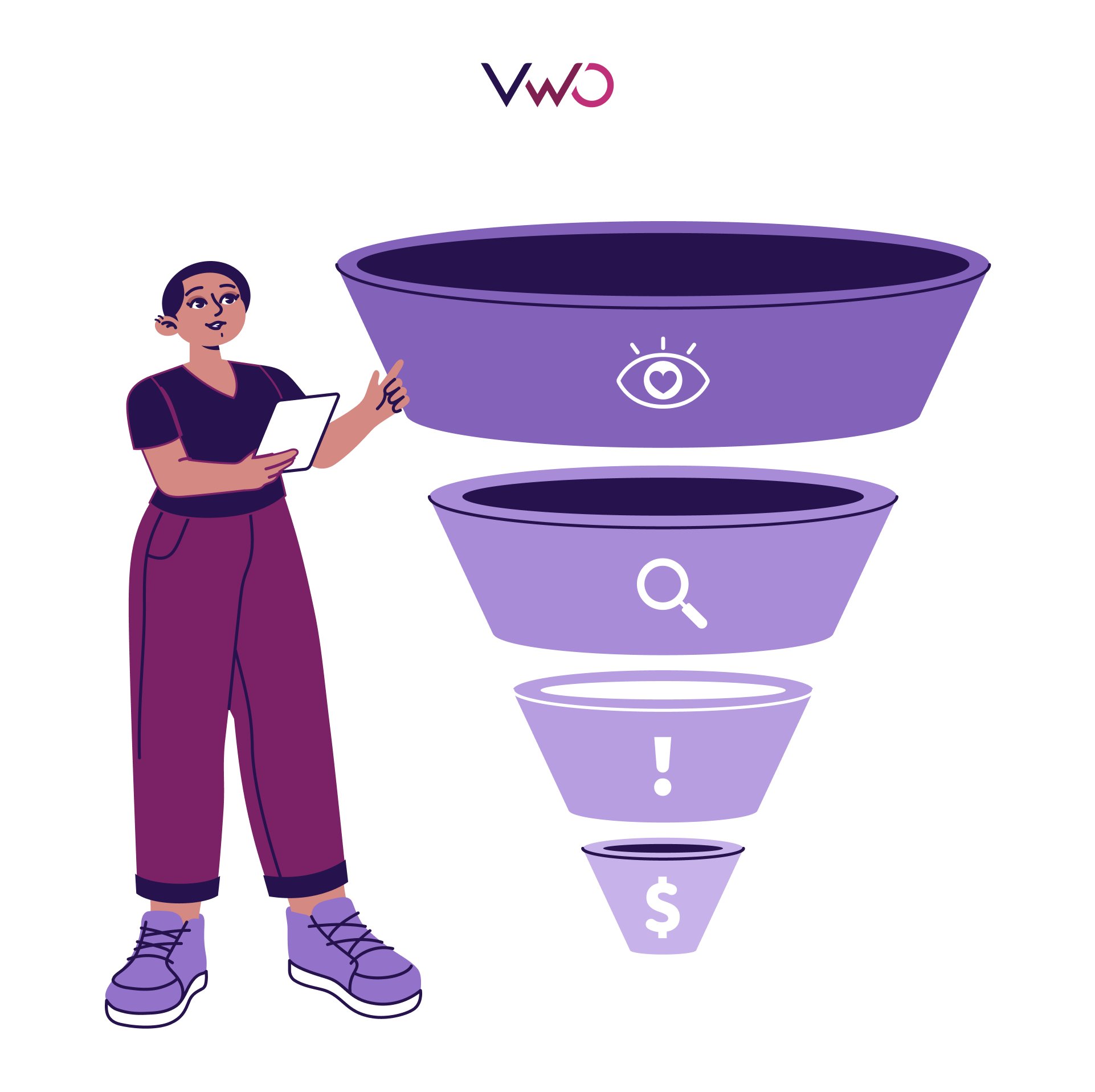
Example: If 40% of users drop off at the final checkout page, session recordings might show they’re confused about payment methods.
Simplify the process—reduce steps, remove distractions, and clarify instructions.
2. Focus on app onboarding
The onboarding experience makes or breaks the first impression. If users struggle here, they may leave forever.
Here is an app onboarding guide to learn more about optimizing it.
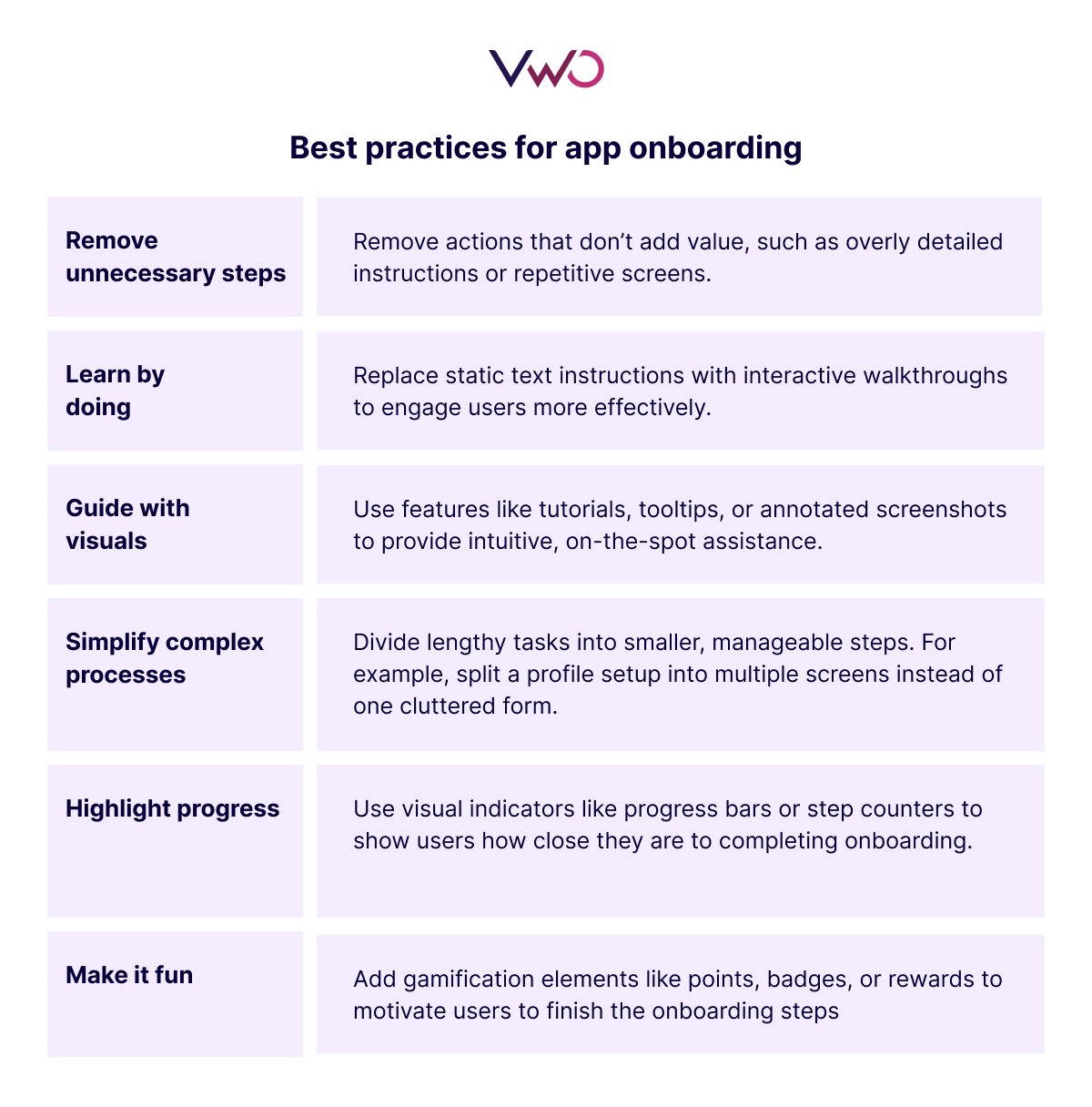
3. Personalization
Generic experiences don’t work anymore. Users expect personalized interactions that make the app feel relevant to them.
A McKinsey study found that 71% of consumers expect personalized company interactions, and 76% feel frustrated when their expectations aren’t met.
Ways to personalize your app
- Behavior-based recommendations: Show content, features, or offers based on user actions. Example: Spotify recommends playlists based on listening habits.
- Targeted nudges: Send reminders for incomplete tasks or underused features.
- Location-based content: Customize offers or services depending on the user’s region.
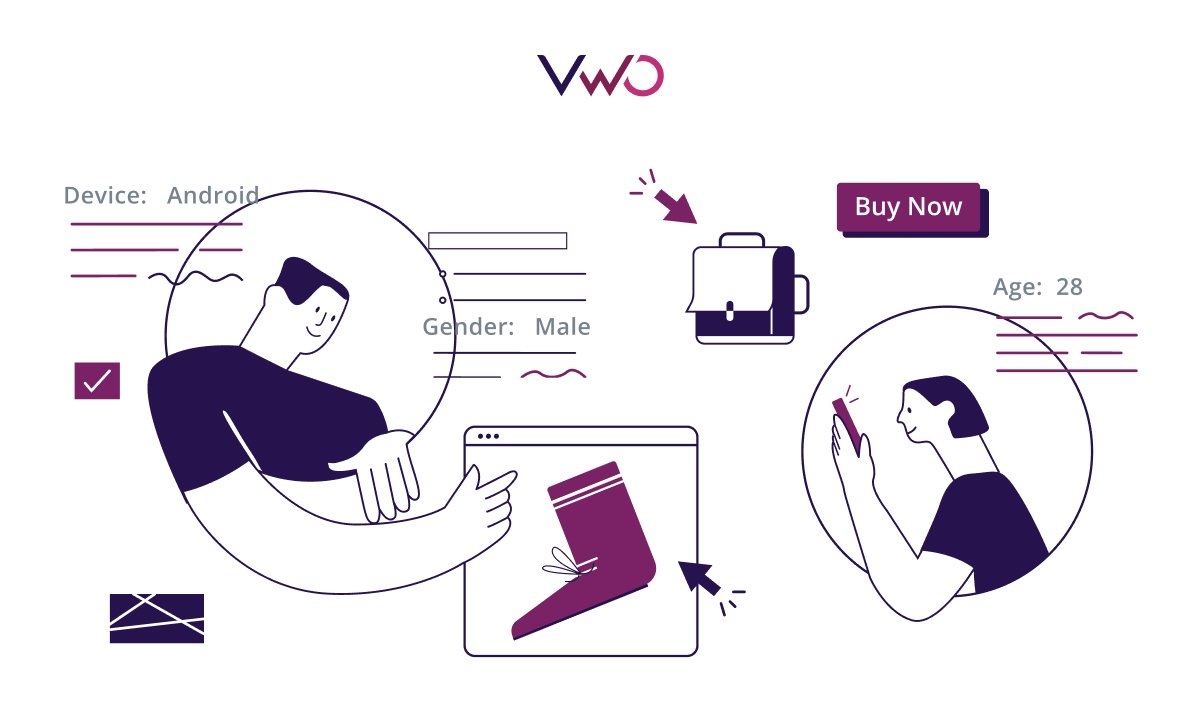
Combine heatmaps and behavior data to identify personalization opportunities. If a feature gets ignored, tailor reminders to bring it into focus.
Making changes without testing can backfire. A/B testing ensures every update drives measurable impact.
4. A/B testing
In A/B testing, you create two versions of a screen, feature, or flow. Half of your users see Version A, and the other half see Version B.
Examples of A/B tests:
- Test different button colors or placements for CTAs.
- Compare short vs. long onboarding flows.
- Try different headlines for feature prompts.
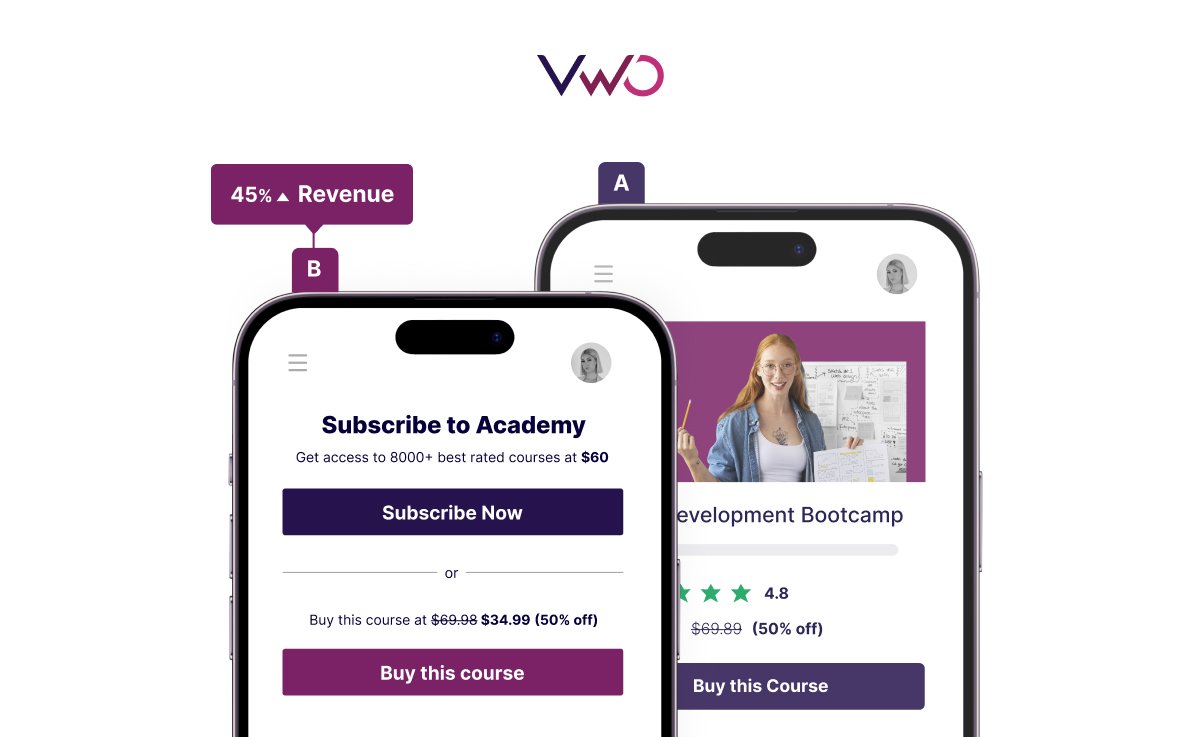
To learn more, explore our step-by-step guide, which explains the “whys” and “hows” of mobile app A/B testing.
Mobile app optimization isn’t a one-and-done task. Continuous monitoring helps you adapt as user needs evolve.
Mobile app security optimization
Safeguarding mobile apps is crucial to maintaining user trust and preventing app abandonment in the face of increasing cyber threats.
1. Adopt a security-first approach
Start by embedding security into your app development culture. Treat security as a core element of the software development lifecycle (SDLC), not an afterthought. Train your team to prioritize security across every phase, from coding to deployment.
2. Conduct risk assessment and follow security standards
Identify potential threats using frameworks like STRIDE and implement OWASP MASVS guidelines to build resilient apps and protect sensitive data. These standards offer resilience, encryption, and secure data storage guidelines to protect apps against common vulnerabilities.
3. Integrate security into DevSecOps
Incorporate security practices at every stage of the SDLC by following DevSecOps principles. Conduct static, dynamic, and interactive security testing during the coding and testing phases to catch vulnerabilities before the release.
4. Harden your app and secure third-party components
Implement code obfuscation, encryption, and runtime application self-protection (RASP) to protect your app from reverse engineering and tampering. This ensures your app can withstand client-side attacks like code injections and IP theft.
5. Perform continuous threat monitoring
After release, monitor your app for emerging threats through real-time threat detection tools like ThreatCast. Stay updated on evolving attack methods and regulatory changes to keep your app secure over time.
6. Secure sensitive data
Implement end-to-end encryption to protect user data both in transit and at rest. If applicable, avoid storing sensitive information on the client side and follow data protection regulations like GDPR and HIPAA.
Push notifications
Push notifications are integral to mobile apps but can be a double-edged sword.
They help boost engagement, retention, and conversions, but if poorly handled, they can also cause frustration and app abandonment.
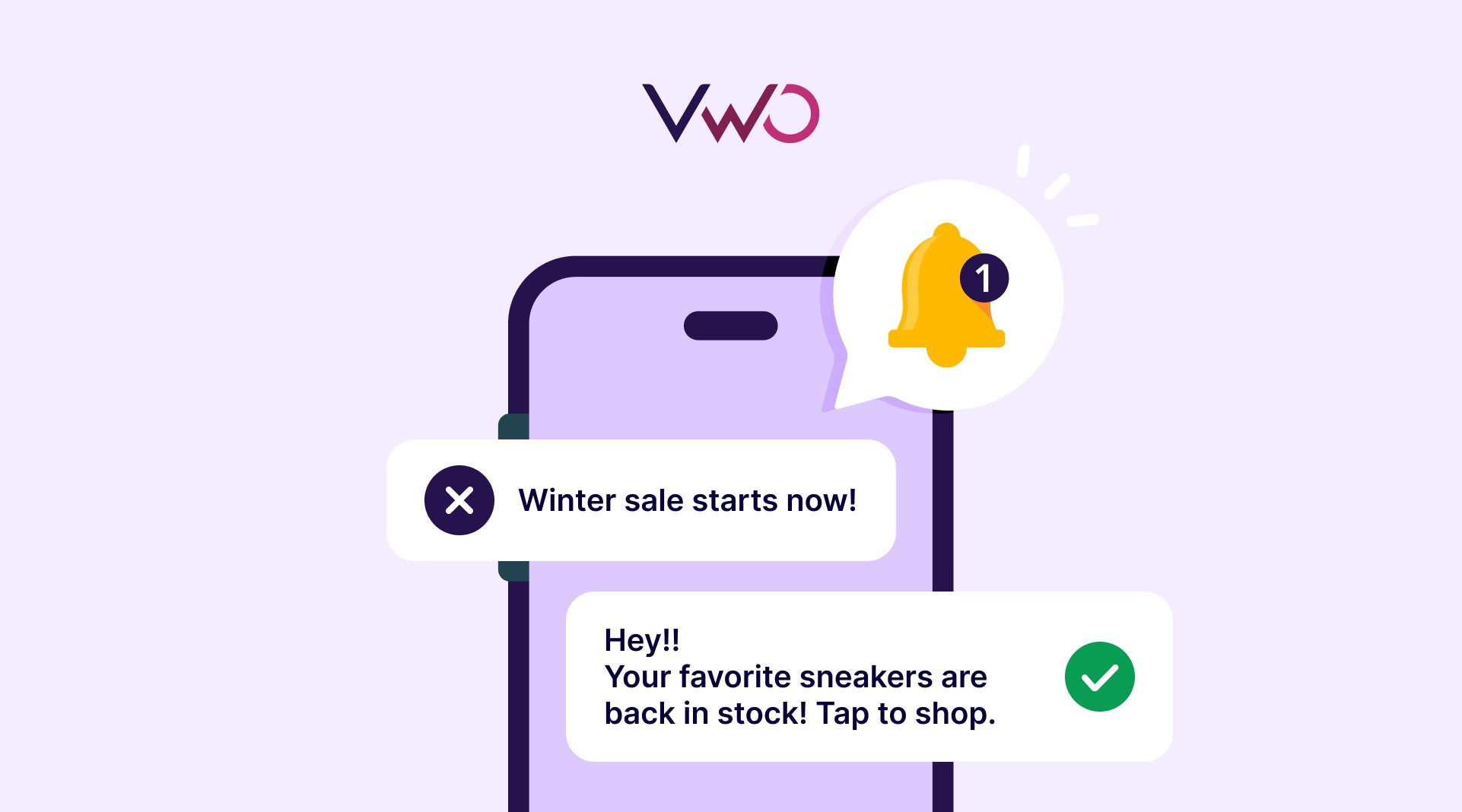
A large-scale study analyzed 200 million notifications from over 40,000 users to understand what makes notifications effective and how users interact.
The findings revealed that users click on 50% of notifications within the first 30 seconds, proving their immediacy and impact.
However, irrelevant or frequent notifications are often ignored or blacklisted, suggesting the need for a strategic approach to push notifications.
The research highlights that notifications about people and in-app events, such as messages or reminders, are considered the most valuable and actionable.
On the other hand, system-related or repetitive notifications are perceived as annoying and are more likely to be blocked by users. For mobile apps to retain user trust and engagement, push notifications must be personalized, well-timed, and relevant to the user’s context.
Here are things you can do –
1. Focus on personalized and relevant notifications
Users value personal, timely, and context-driven notifications. Notifications related to people and events (like messages or reminders) are rated as the most important. Use user behavior data to ensure your push notifications add value, not noise.
2. Avoid notification overload
Sending too many notifications can annoy users and lead them to mute or blacklist your app. Limit non-critical notifications and prioritize high-value alerts. Studies showed that users often block apps that frequently send repetitive or irrelevant notifications.
3. Optimize click timing and urgency
Most users interact with notifications within the first 30 seconds if they find them important. Ensure your notifications prompt quick action by delivering them immediately (e.g., based on time zones or activity patterns).
4. Give users control over notifications
Provide options for users to customize notification preferences, like choosing the types of alerts they want to receive. This reduces frustration and ensures users only get the most relevant notifications.
5. Balance disruption with value
Avoid interrupting users with the system or self-initiated actions they already expect (e.g., app updates). Instead, notify them about meaningful updates that improve their experience.
Mobile app analytics and tracking
Mobile app analytics tools are like having X-ray vision into how users interact with your app. Here’s a breakdown of how it plays a crucial role in mobile app optimization:
1. Track key performance metrics:
- Think of it as your app’s health checkup. You need to keep a close eye on vital signs like:
- Session lengths: How long are users sticking around? Short sessions might signal they’re not finding what they need or are getting bored.
- Drop-off rates: Where are users abandoning your app? Identify those leaky buckets in your user flow.
- Crash rates: How often is your app crashing? Crashes are a major frustration and a quick way to lose users.
- User acquisition costs: How much does it cost to acquire a new user? Track this to optimize your marketing spend.
- Lifetime value (LTV): How much revenue does a user generate over their lifetime? Increase LTV by improving engagement and retention.
2. Go beyond the numbers:
- Heatmaps: These visual maps show you where users are tapping, swiping, and scrolling. Are they interacting with key features? Are important elements hidden or confusing?
- Session recordings: Watch replays of real user sessions. It’s like sitting over their shoulder and seeing exactly how they navigate your app, where they get stuck, and why they might leave.
- Funnel analysis: Track user progress through key app steps (like signup, purchase, etc.). Identify bottlenecks where users are dropping off.
3. Listen to your users:
- App reviews: Pay close attention to what users are saying in their reviews. Are they praising specific features or complaining about bugs?
- Surveys: Use in-app surveys to gather feedback on specific features or updates.
- Support tickets: Analyze support tickets to identify recurring issues or areas where users need help.
4. Turn insights into action:
- Identify pain points: Use the data to pinpoint areas of friction in the user experience.
- Prioritize improvements: Focus on fixing bugs, improving navigation, or redesigning confusing screens.
- Measure the impact: Track the effect of your changes on key metrics to see if your optimizations are working.
Let’s say your analytics show a high drop-off rate on a particular screen. By watching session recordings, you discover users are confused about how to fill out a form. You can then redesign the form to make it clearer and more intuitive, leading to more conversions.
Mobile app analytics and tracking provide the data-driven insights you need to understand user behavior, identify areas for improvement, and optimize your app for a better user experience.
Best practices in mobile app optimization
1. Thoroughly following app store guidelines
Each app store has specific policies and submission guidelines. Ignoring them can result in rejections, delays, or even removal of your app. Ensure your app complies with content, security, and update guidelines to avoid unnecessary issues.
2. Avoid stuffing or using irrelevant keywords
Keyword optimization is crucial for app visibility. Using irrelevant or overly broad keywords can hurt your app’s ranking and attract the wrong audience. Focus on relevant, user-intent-based keywords to ensure your app appears in targeted searches. Also, don’t stuff them, but make them flow naturally into your descriptions.
3. Don’t overload the app with features
Adding too many features can overcomplicate the app and negatively impact performance. Users prefer simple, intuitive apps that load quickly. Prioritize core features, test them thoroughly, and roll out new ones gradually based on user feedback.
4. Don’t fail to optimize images and videos
Poorly optimized app icons, screenshots, and promo videos can reduce user interest. High-quality, fast-loading visuals are essential for engaging users and improving conversion rates. Ensure all media is optimized for size and clarity without affecting load times.
5. Don’t neglect app security
Apps that lack proper security measures put user data at risk and lose trust. Weak encryption, unprotected APIs, and outdated libraries make your app vulnerable to cyberattacks. Regularly update your app to fix security flaws, comply with privacy laws, and protect user data.
Tools for mobile app optimization
1. Google Analytics for Mobile
Google Analytics provides detailed insights into user behavior on your app. You can track active mobile users, session duration, bounce rates, and retention. Understanding how users navigate your app helps you identify bottlenecks and improve user experience.
2. Data.ai
Formerly known as App Annie, Data.ai offers market insights, competitor analysis, and app performance tracking. It helps you monitor app store rankings, user reviews, and keyword performance to refine your ASO strategy and boost visibility.
3. Mixpanel
Mixpanel is a product analytics tool that focuses on user engagement and retention analytics. It helps you track in-app actions, user journeys, and conversion funnels. The tool allows you to identify drop-off points and optimize key touchpoints to increase user engagement and conversions.
4. Firebase
Firebase is a comprehensive mobile app development platform by Google. It offers analytics, crash reporting, performance monitoring, and A/B testing tools. It also helps with push notifications, authentication, and real-time data syncing, making it easier to improve app stability and user experience.
5. VWO
VWO is an experience optimization platform for web, mobile apps and features that allows you to run A/B tests, heatmaps, and session recordings for your app. It helps you understand user behavior and test feature rollouts to ensure you deliver the best possible experience. With VWO, you can personalize app experiences and track which changes improve retention and monetization.
Future trends in mobile app optimization
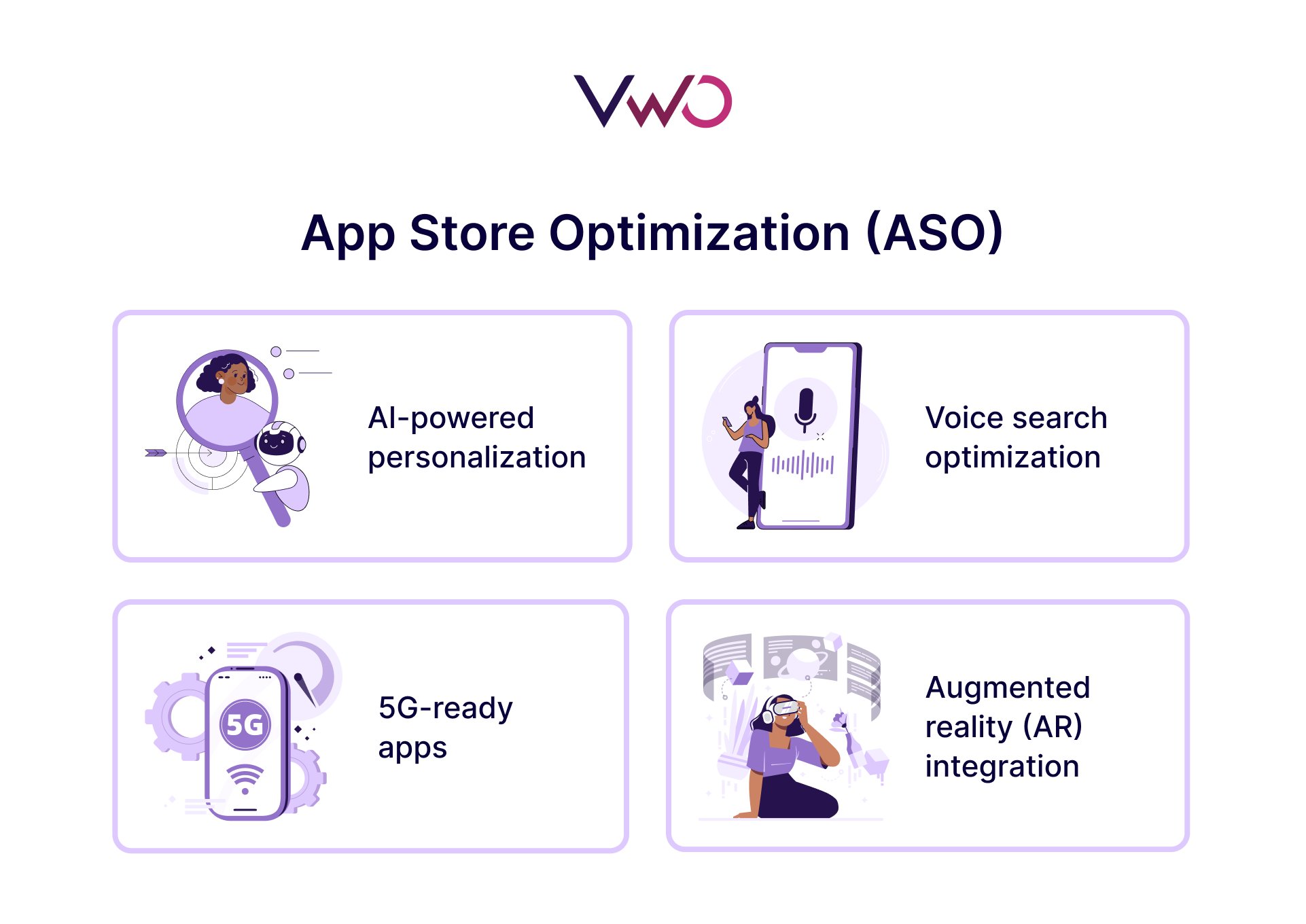
1. AI-powered personalization
AI will be key in delivering personalized user experiences by analyzing user behavior and preferences. This includes customized content, recommendations, and notifications that boost engagement, retention, and monetization.
2. Voice search optimization
As voice assistants grow in popularity, optimizing apps for voice-based interactions will become essential. Apps need voice-friendly navigation and voice search capabilities to improve user accessibility and convenience.
3. 5G-ready apps
With 5G networks offering faster speeds and lower latency, mobile apps can deliver richer experiences like high-quality streaming, real-time AR/VR interactions, and faster load times, enhancing overall performance.
4. Augmented reality (AR) integration
AR will increasingly be used to create immersive experiences in the gaming, retail, healthcare, and education sectors. Mobile apps with AR features can provide real-world simulations, making them more interactive and engaging.
FAQs about mobile app optimization
ASO improves app store visibility through better keywords, descriptions, and visuals. MAO focuses on overall app performance, user-friendly interface, and security to enhance user experience and engagement.
Update your app every 2-4 weeks or when needed to fix bugs, improve performance, and add features. Use data-driven insights to ensure updates enhance user experience.
Yes, optimization boosts engagement by improving UX, reducing crashes, and offering personalized experiences, which increases in-app purchases, subscriptions, and ad revenue.
User reviews impact app store rankings and provide valuable feedback for improvement. Positive reviews boost downloads while addressing negative reviews improves user trust and retention.
Track download rates, retention rates, engagement, and crash reports. These metrics help improve UX, reduce churn, and identify areas to boost overall app performance.



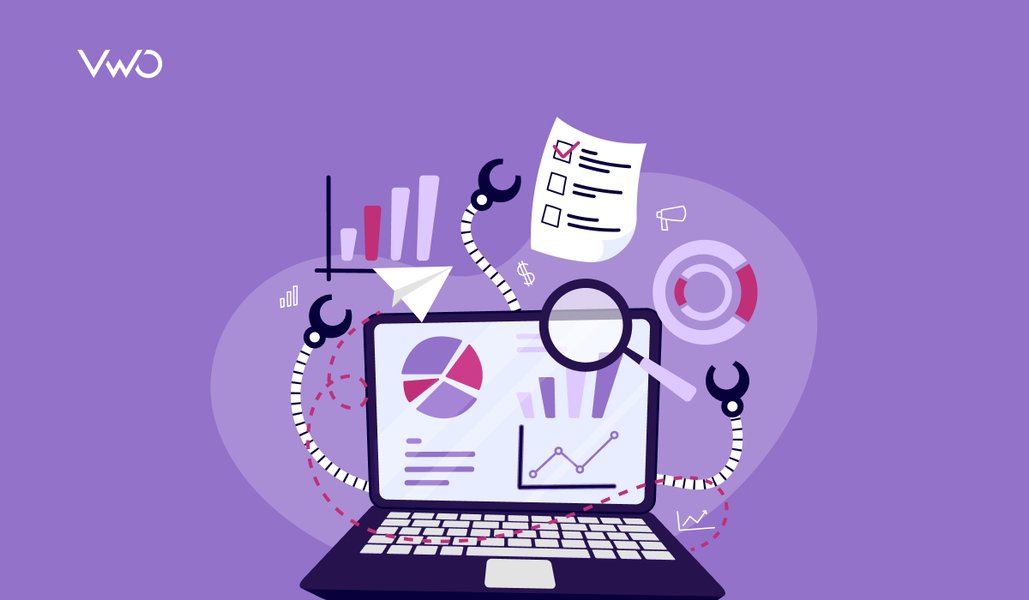
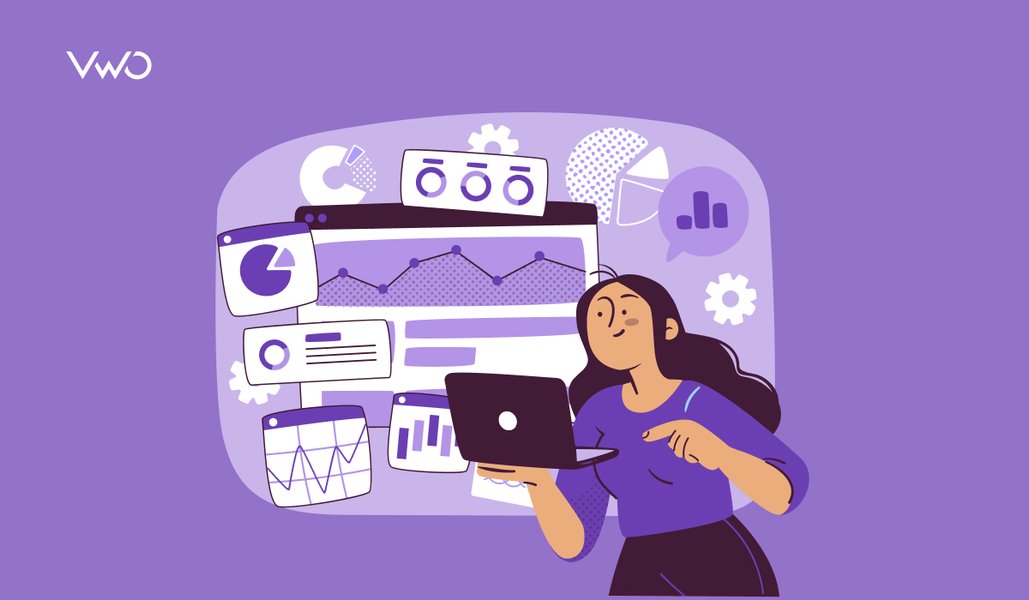
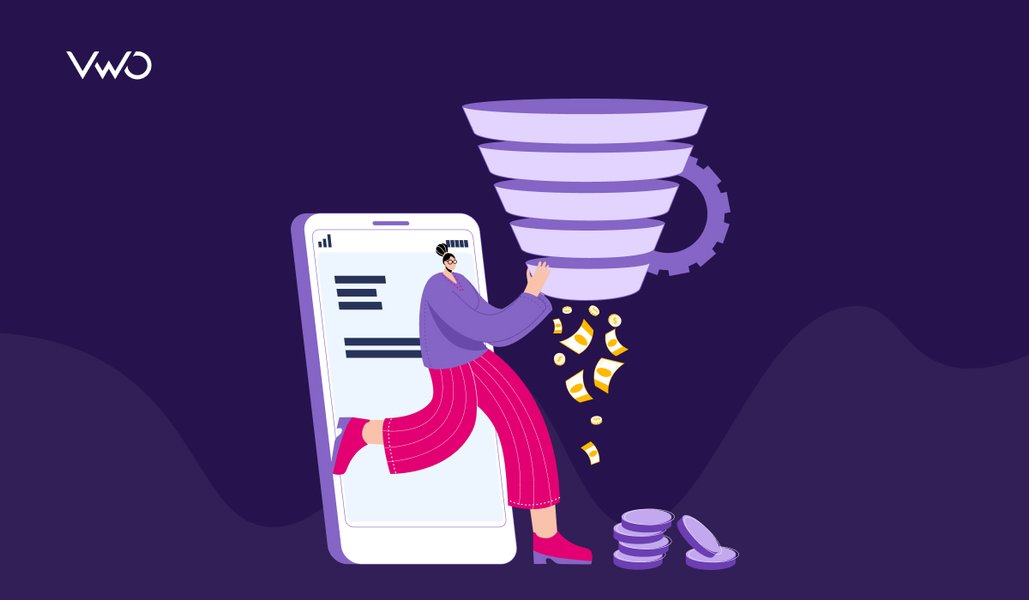
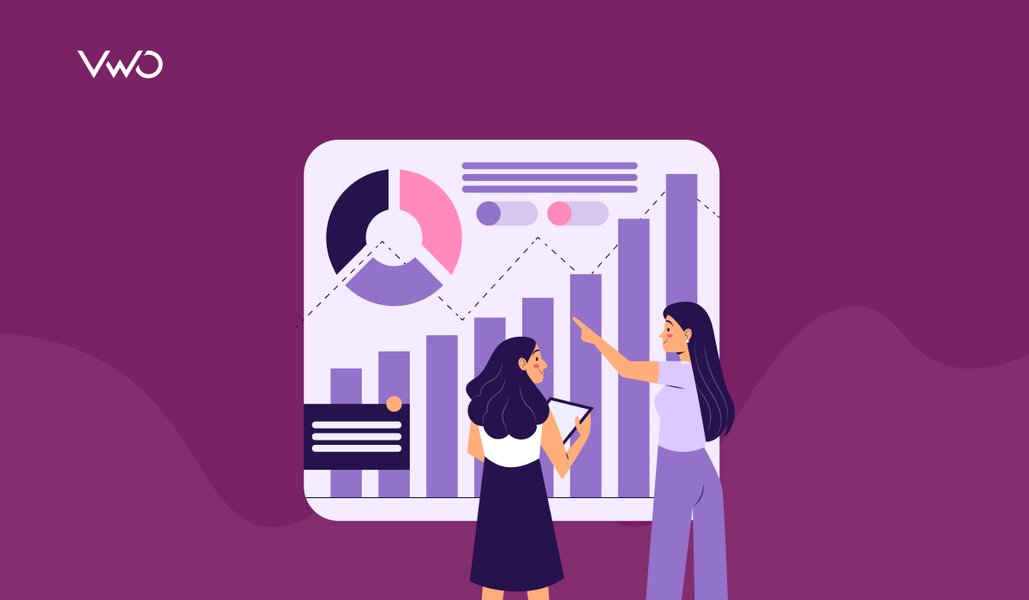
![5 Best Free App Analytics Tools in 2026 to Boost App Performance [Research-Backed Picks]](https://static.wingify.com/gcp/uploads/sites/3/2025/04/Feature-image-5-Top-App-Analytics-Tools_-Solutions-to-Improve-Your-App-Performance.jpg?tr=h-600)











